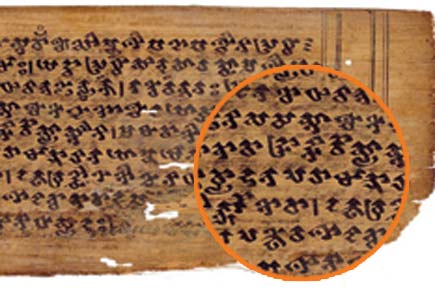Tomorrow, a professor from Germany will help you discover a lesser-known Buddhist script with characters resembling arrows


A folio side from the manuscript of the Candralamkara (Ornament of the Moon), 1278, Cambridge University Library, also known as arrow-headed script in modern times
Back in 1884, British Indologist Cecil Bendall came across a fragment of a unique manuscript in Kathmandu, Nepal. Due to the form of its calligraphic characters, he described it as 'arrow-headed script' and suggested that it might be identical to Bhaiksuki, an Indian script mentioned by the famous Persian polymath Al-Biruni back in the 10th Century. "In the course of my own research, I came to the conclusion that most probably, the script discovered by Bendall was originally called Saindhavi," shares Germany-based Dr Dragomir Dimitrov. An author and assistant professor of Indology and Tibetology at the Philipps-Universität Marburg in Germany, Dimitrov will present a lecture on the lesser-known script for the first time at KJ Somaiya Centre for Buddhist Studies tomorrow.
ADVERTISEMENT

Dr Dragomir Dimitrov
Used predominantly by the Sammitiya Buddhists, who were also known as Saindhavas, the Saindhavi script is a poorly attested Indian script. "The knowledge of the script is a fascinating part of the multifaceted intellectual and religious history of India. It was used especially in the beginning of the second millennium for the purpose of writing down their religious texts and dedicatory inscriptions. Its traces have survived for several centuries in Tibet where it was called 'Sindhu yi ge', that is, the Indus script," shares Dimitrov.
The professor adds that judging by the name of the script, it would probably have originated in the region of the Indus River, "of course, much later and entirely independently of the so-called Indus script of the Indus Valley Civilisation".
 Subscribe today by clicking the link and stay updated with the latest news!" Click here!
Subscribe today by clicking the link and stay updated with the latest news!" Click here!







